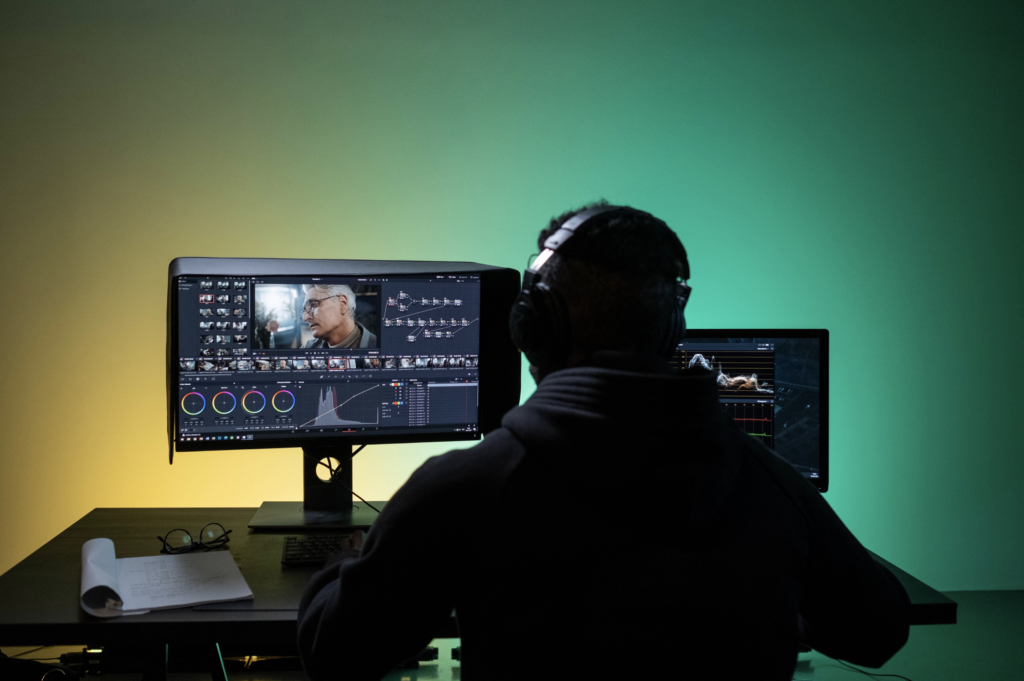These 7 Tips are Essential for Product Video Shoots!
It is no secret that video content is king. The world is slowly changing to a video first basis, and every business, brand, and creator is coming up with different ways to prioritize video.
We are trained to absorb visual content way better than anything written. If a picture is worth a thousand words, videos are the complete textbook. Videos have the power to touch people emotionally and connect with individuals in a way that no other medium can.
With such ample benefits, product shoots can be a crucial element in driving success to a business. By leveraging the advantages of video to your product to create effective and converting product videos, businesses can quickly increase their brand awareness, build traffic and eventually maximize sales.
But as a cinematographer, or a DP, your number one goal is to see something beyond the vision of an average individual and present it in an appealing manner, whatever the task you undertake.
But how do you bring in that aesthetic to just an average bottle, box, or tool?
How do you make it feel like it’s the best?
Product shoots are going to be part and parcel of any videographer. More and more businesses want their products advertised on social media and digital platforms, expect loads of work coming your way.
But with the extended product shoots come tight budgets but with elevated expectations. But as cinematographers, you can’t say no to a product shoot just because a client says the budget is too high. As DP’s, we try to be innovative and find fitting solutions to make everything work.
So we’ve compiled a 7 essential tips on how to create fantastic product videos to meet expectations.
1 Plan out your video

A great shoot starts in planning
All successful product shoots start with a great plan. Especially for product shoots, planning is the center of everything. When you get the product shoot request, it is highly recommended that you study the material that you are shooting.
It can be an energy drink, a mineral water bottle, a simple briefcase, or a tech gadget. No matter what the product or the fancy accessory is, you will need to sit down and read and understand the product first. Try looking at the product specifications and the benefits the product will provide to a potential user.
Next, understand what kind of angle that you want to show through the product shoot. The client often lays out the expectations, but sometimes, you will need to bring your input in getting the word out in the best way possible.
Once this is done, next is all about the script. Usual product shoots are kept to a minute (45 seconds to 60 seconds is the sweet spot). This timing is the benchmark you need to match.
The script should include the main items of product discovery, positioning, and amplifications using any props or effects. Once you lay all the possible outcomes and how the script needs to flow, you can set the scene up.
Don’t forget to include the more delicate bits, such as the camera positioning, the shots that you will want to capture for the shoot.
2 Keep it simple
One important actualization that all videographers need to understand is that this video is not about you but about that product. In such a case, you don’t need to bring out every single trick and effect you have in the skill book – it is not required.
What the objective should be is to provide the best possible on the product. Don’t try to outdo every other commercial you’ve seen.
While many cinematographers don’t like this phrase, product shoots are all about ‘keeping it simple.’
By doing so, you can also keep the cost down and still meet the expectations.
The classic moves will do the job.
3 Keeping it consistent across products

Always maintain the consistent brand imagery
If you are a business or a brand, or even a filmmaker – the chances will be that you will be shooting multiple products, either on one day or on different days.
You might be shooting several products for one brand, and in this scenario, you must maintain consistency.
It can be the small things – the backdrop, how the products are introduced, and the color schemes. These forms of subtle branding stay in a consumer’s head and bring a top-of-the-mind recollection and remember the product.
One of the main goals of a product video will be to drive conversions – be it engagement, visits of sales, and consistent branding will make viewers connect with a brand easily in the long run.
4 Share a story, not ingredients and technical terms
Videographers are storytellers. Videos that we create tell stories to inspire and stories to drive goals. The same goes for product video shoots – the setting might be different, but the objective remains the same.
When people look at a product video, your viewer isn’t interested in how much it weighs or the speed on the device.
They are interested in what kind of benefit that they will get from the product. The ideal viewer is interested in “How will this product make my life better than what it is right now.”
Your product video needs to play to this dynamic. Apple’s product videos and commercials are the best examples to take for this. Take any of their product launch videos or commercials. They aren’t busy going on a glory hunt, bringing their specs too much.
EMBED VIDEO: https://www.youtube.com/watch?v=4X_IW3kqr3k
Rather than that, they are busy portraying the experience one would get by using the product.
Take inspiration from Apple and see what you can offer in the sure. Specs are essential, but they shouldn’t be #1 on the list.
In recent times, the experiences are also further streamlined. Today, Gen Zs and Millennials are more interested in the business equally as the product. Gone are the days where product shoots are done just for consumerism’s sake.
Now product shoots have a bigger purpose. Not only should a product shoot be about the product, but it also needs to be aligning with the business’s reason for existing. Videographers will require to encompass all of this.
5 Speak directly to the target audience
With a product commercial or a product video, it is not going to resonate with every single customer. You will be picking a niche or a selected set of niches when you create something.

Gen Z and Millennial populations aren’t only interested in products
Going on the promise of trying to please everyone isn’t going to be helping anyone’s case. But by niching it down, you have the complete focus of the ideal customer.
Take a product shoot for a sneaker brand, for example. The business you run or for whom you are currently making the content is looking to attract the Gen Z customer base. To do this, they will be looking to use words in the modern slang that speaks to this base.
They will also keep the conversations light and push more image-oriented content, showing the business’s bottom line (because Gen Z’s are environmentally conscious).
If you are not from this age group, the video might confuse you. But for the business, this is a target achieved.
While most of this content will go on social platforms and streaming sites, they will be used as promoted ads or targeted videos, further helping the case.
6 Show the experience, and DON’T force it in
If there’s something that makes customers move away and build a negative perception for a brand, that will be a product shoot that scares people to purchase their product.
In this scenario, a business is trying to instill fear and make customers buy their product, which is cheap. A great business should always list the experiences and show how the product could make life better, not scare tactics.
That’s why the knowledge phase is essential, where you drill down the specifics and understand the product. Here once you find the unique selling point (USP), everything else falls into place.
You sell the experience, and the customers will come.
7 Don’t be afraid to condense or even scrap shots

No matter how good a shot looks, if it doesn’t fit the storyline, then it goes off
Now that you’ve shot your product commercial, it is time for the edit. You have at most 20-30 minutes of video footage that you need for the 1-minute shoot. Now is the time to pick the best out of the recordings you made to tell a good product story.
Remember, the priority is about telling a good product story and not combining the best product shots. In the process of making a good storyline, if you must remove good shots, by all means, do it.
Music has an important role in the edit and if there is a budget, always opt to use premium audio from a music gallery. Try to see how you can also add a voiceover to the product shoot if necessary.
Voiceovers have that unique way of convincing viewers and building that connection when you combine it with impactful video.
If the budget isn’t too great, there are always options available to use royalty-free music.
BONUS – Ideal timings for Product videos
A quick demo – 15-60 seconds
Product commercial – 45-60 seconds
Explainer video – 30-90 seconds
Quick tutorial – 90 seconds to 2 and a half minutes (Social Platforms)
In-depth tutorial – These videos can be anything from 5 to 12 minutes
The takeaways – Product Videography
With the current context of video content, if you are a business, you cannot oversee product videos. Product videos are engaging, impactful and will amplify sales in no time.
If you are a filmmaker, expect more and more product shots in the future. 99% of the product shoots will be for digital and streaming platforms, and the challenge will be to create an impactful video that is in line with the budget.
When filming, prioritize your efforts in building impactful storytelling and bring out the USP while selling an experience.
